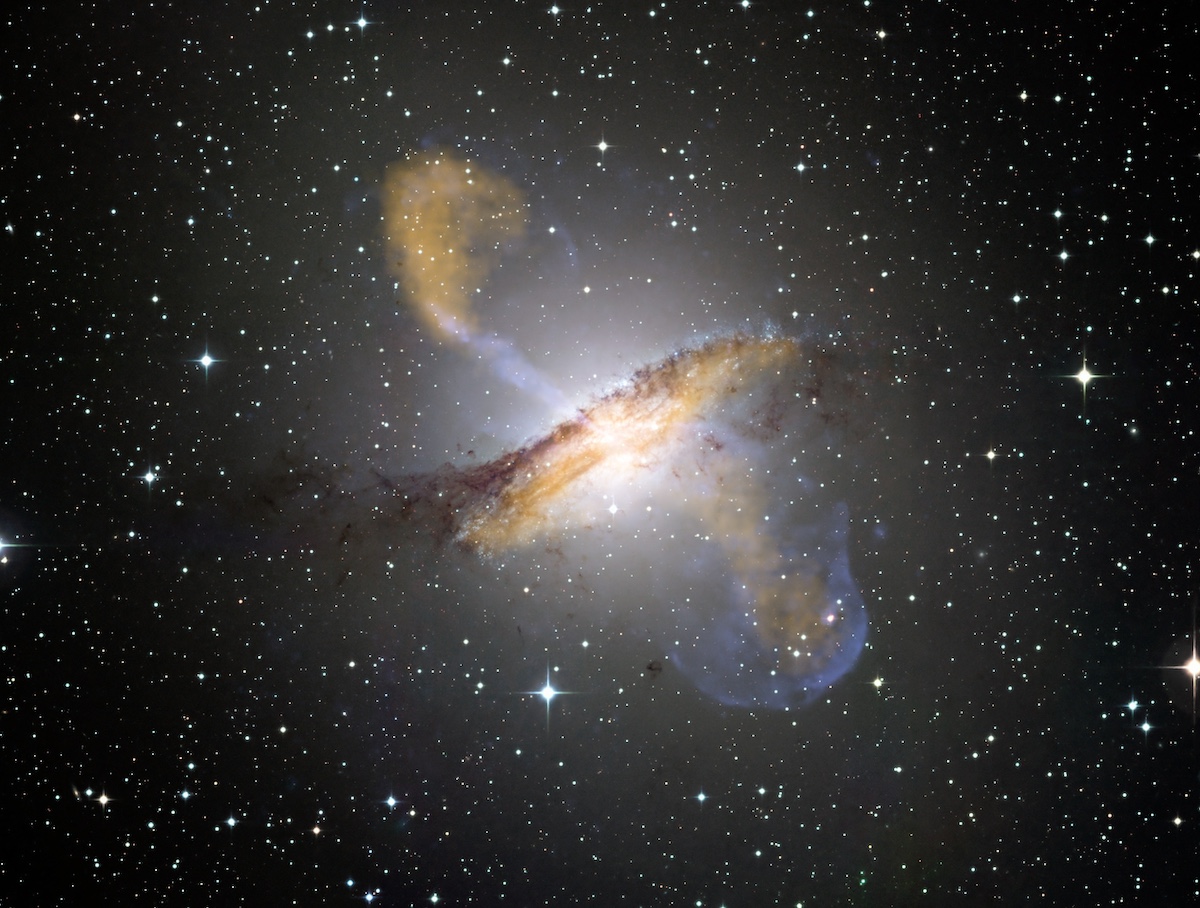Unlocking the Mysteries of Relativistic Jets in the Universe
Relativistic jets, cosmic enigmas of unimaginable power, have long captivated the curiosity of astronomers and astrophysicists. These high-speed streams of particles and radiation emanate from some of the most extreme objects in the universe, including black holes, neutron stars, and active galactic nuclei. In this article, we will delve deep into the realm of relativistic jets, shedding light on their nature, formation, and the profound implications they hold for our understanding of the cosmos. Join us on this cosmic journey as we explore the fascinating world of relativistic jets.
What Exactly is a Relativistic Jet?
Defining the Phenomenon
Relativistic jets are extraordinarily energetic and narrow streams of particles and radiation that extend across vast cosmic distances. These jets are observed in various astronomical objects, from the cores of active galaxies to the remnants of supernovae. Their name, “relativistic,” stems from the fact that the particles within these jets often reach velocities approaching the speed of light, as described by Albert Einstein’s theory of relativity.
The Birthplace: Black Holes and Neutron Stars
Black Holes: Cosmic Vacuum Cleaners
Black holes, the enigmatic cosmic entities formed from the remnants of massive stars, are one of the most prolific sources of relativistic jets. When matter falls into a black hole’s gravitational grasp, it forms an accretion disk around it. Intense gravitational forces and magnetic fields in this disk generate tremendous energy, leading to the ejection of highly energetic particles along the black hole’s rotational axis. These particles then form a relativistic jet, shooting out into space at nearly the speed of light.
Neutron Stars: Pulsar Jets
Neutron stars, the remnants of massive stars after a supernova explosion, can also give rise to relativistic jets. In particular, pulsars, a type of neutron star, are known for emitting beams of radiation from their magnetic poles. If these beams align with Earth’s line of sight, they appear as regular pulses, giving rise to the term “pulsar.” Although pulsar jets are not as intense as those produced by black holes, they provide valuable insights into the physics of relativistic jets.
Active Galactic Nuclei: Cosmic Powerhouses
Beyond stellar remnants, active galactic nuclei (AGN) are another prominent source of relativistic jets. AGN are the central regions of galaxies that host supermassive black holes. As matter falls into these voracious gravitational wells, it releases vast amounts of energy, often channeled into the formation of relativistic jets. The most famous example of an AGN with relativistic jets is M87, a giant elliptical galaxy located in the Virgo Cluster.

The Physics Behind Relativistic Jets
Magnetohydrodynamics (MHD) and Jet Formation
The formation and propagation of relativistic jets are governed by the complex interplay of magnetic fields and plasma, a state of matter consisting of charged particles. The field of magnetohydrodynamics (MHD) plays a pivotal role in our understanding of these phenomena.
In an accretion disk around a black hole or a neutron star, magnetic fields become tightly wound up due to the differential rotation of the disk. This process stores immense energy within the magnetic fields, which is then released in the form of jets. The exact mechanism responsible for accelerating particles to near-light speeds within these magnetic fields remains a subject of ongoing research.
Collimation: Narrowing the Beam
One of the most intriguing aspects of relativistic jets is their remarkable collimation. Despite originating from relatively small regions, these jets can extend for vast cosmic distances while maintaining their narrowness. This behavior challenges our understanding of how such extreme collimation is achieved.
Research suggests that the magnetic fields surrounding the black hole or neutron star play a crucial role in focusing and maintaining the narrowness of the jet. These magnetic fields act as cosmic funnels, directing the high-energy particles along a well-defined path, preventing them from dispersing into space.
The Multifaceted Implications of Relativistic Jets
Probing Extreme Conditions
Relativistic jets offer astronomers a unique laboratory for studying some of the most extreme conditions in the universe. The intense gravitational fields, extreme magnetic forces, and relativistic velocities provide insights into the fundamental laws of physics under conditions impossible to replicate on Earth.
By analyzing the radiation emitted from these jets, scientists can investigate the properties of matter at extreme temperatures and densities. This research has far-reaching implications for our understanding of particle physics, nuclear physics, and the behavior of matter under extreme pressure.
Cosmological Distance Markers
Relativistic jets also serve as invaluable tools for measuring cosmic distances. Since these jets are associated with specific astrophysical objects, such as active galactic nuclei or gamma-ray bursts, their observation allows astronomers to determine the distance to these objects using various methods, including the redshift of spectral lines. This, in turn, helps us create a more accurate cosmic distance ladder, enhancing our understanding of the scale and age of the universe.
High-Energy Cosmic Rays
The extreme energies present in relativistic jets have led to speculations about their role in generating high-energy cosmic rays. Cosmic rays are highly energetic particles that constantly bombard Earth from space, and their origin has been a longstanding mystery. While relativistic jets may contribute to the cosmic ray population, the exact mechanisms behind this process remain a subject of ongoing research.
Cosmic Feedback and Galaxy Evolution
Relativistic jets have a profound impact on their surrounding environments, playing a role in the grand cosmic scheme of galaxy evolution. When these jets interact with the gas and dust within their host galaxies, they release copious amounts of energy, heating and disturbing the surrounding medium. This phenomenon, known as “cosmic feedback,” can influence star formation rates, galaxy morphology, and the distribution of matter within galaxies.
Blazars: A Special Class of Relativistic Jets
Blazars are a specific subclass of active galactic nuclei that host relativistic jets aligned with Earth’s line of sight. This alignment results in blazars appearing exceptionally bright and variable in the electromagnetic spectrum. Studying blazars provides insights into the mechanisms responsible for the emission of radiation from relativistic jets and the extreme conditions near supermassive black holes.
The Observational Challenges
Electromagnetic Spectrum: The Key to Discovery
Relativistic jets emit radiation across the entire electromagnetic spectrum, from radio waves to gamma rays. To unravel their mysteries, astronomers rely on a multitude of observatories and instruments, each sensitive to different parts of the spectrum. This collaborative effort allows scientists to compile a comprehensive view of these enigmatic cosmic phenomena.
Radio Astronomy: Unveiling the Core
Radio telescopes, such as the Very Long Baseline Array (VLBA) and the Atacama Large Millimeter/submillimeter Array (ALMA), play a crucial role in studying relativistic jets. Radio observations can penetrate through the thick shrouds of dust and gas surrounding the central regions of galaxies, revealing the core of AGN and the origins of relativistic jets.
X-rays and Gamma Rays: The High-Energy Frontier
X-ray and gamma-ray telescopes, like NASA’s Chandra X-ray Observatory and the Fermi Gamma-ray Space Telescope, capture the most energetic emissions from relativistic jets. These observations provide essential insights into the acceleration processes and the presence of ultra-high-energy particles within the jets.
Multi-Messenger Astronomy: A New Era
The advent of multi-messenger astronomy has revolutionized our understanding of relativistic jets. Combining data from different sources, such as gravitational wave detectors like LIGO and Virgo, with traditional electromagnetic observations, allows scientists to gain a more comprehensive picture of cosmic events involving relativistic jets, such as the merger of black holes.
The Unanswered Questions
The Role of Magnetic Fields
While the significance of magnetic fields in the formation and collimation of relativistic jets is widely accepted, the exact mechanisms at play remain a subject of ongoing research. Understanding how these fields accelerate particles and maintain jet stability is a complex puzzle that continues to challenge astrophysicists.
Particle Acceleration Mechanisms
The mechanisms responsible for accelerating particles within relativistic jets to near-light speeds remain a subject of intense scrutiny. Researchers are investigating various processes, including magnetic reconnection and shock acceleration, to gain a deeper understanding of this phenomenon.
The Connection to Cosmic Rays
Relativistic jets are potential contributors to the population of high-energy cosmic rays that permeate the universe. However, the exact mechanisms by which these jets generate cosmic rays and their contribution to the overall cosmic ray flux remain unclear.
The Impact of Jets on Galaxy Evolution
While it is evident that relativistic jets influence their host galaxies, the extent of this impact and the specific processes involved are still not fully understood. Researchers are actively studying how cosmic feedback from jets affects star formation, galactic dynamics, and the evolution of galaxies over cosmic timescales.
The Future of Relativistic Jet Research
As technology advances and our observational capabilities continue to improve, the study of relativistic jets is poised to make even greater strides. Future space-based telescopes, such as the James Webb Space Telescope (JWST) and the Square Kilometre Array (SKA), will provide unprecedented insights into these cosmic phenomena.
Researchers are also exploring novel approaches, such as neutrino and gravitational wave detectors, to complement traditional electromagnetic observations. By combining data from multiple sources, we hope to unravel the remaining mysteries surrounding relativistic jets and gain a deeper understanding of their role in shaping the cosmos.
Relativistic Jets
Relativistic jets, the powerful and enigmatic cosmic phenomena originating from black holes, neutron stars, and active galactic nuclei, continue to captivate the imagination of astronomers and astrophysicists. These high-speed streams of particles and radiation offer a unique window into the extreme conditions of the universe and play a crucial role in our understanding of cosmic distances, high-energy particles, and galaxy evolution.
Despite decades of research, many questions about relativistic jets remain unanswered. The role of magnetic fields, the mechanisms behind particle acceleration, and their connection to cosmic rays are just a few of the puzzles that continue to challenge scientists in the field. As technology advances and our observational capabilities grow, the future promises even greater discoveries in the world of relativistic jets, unlocking the secrets of the cosmos one beam of light at a time.

